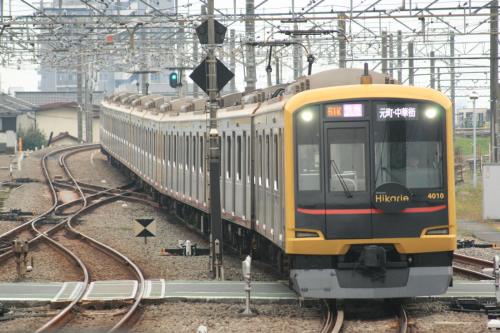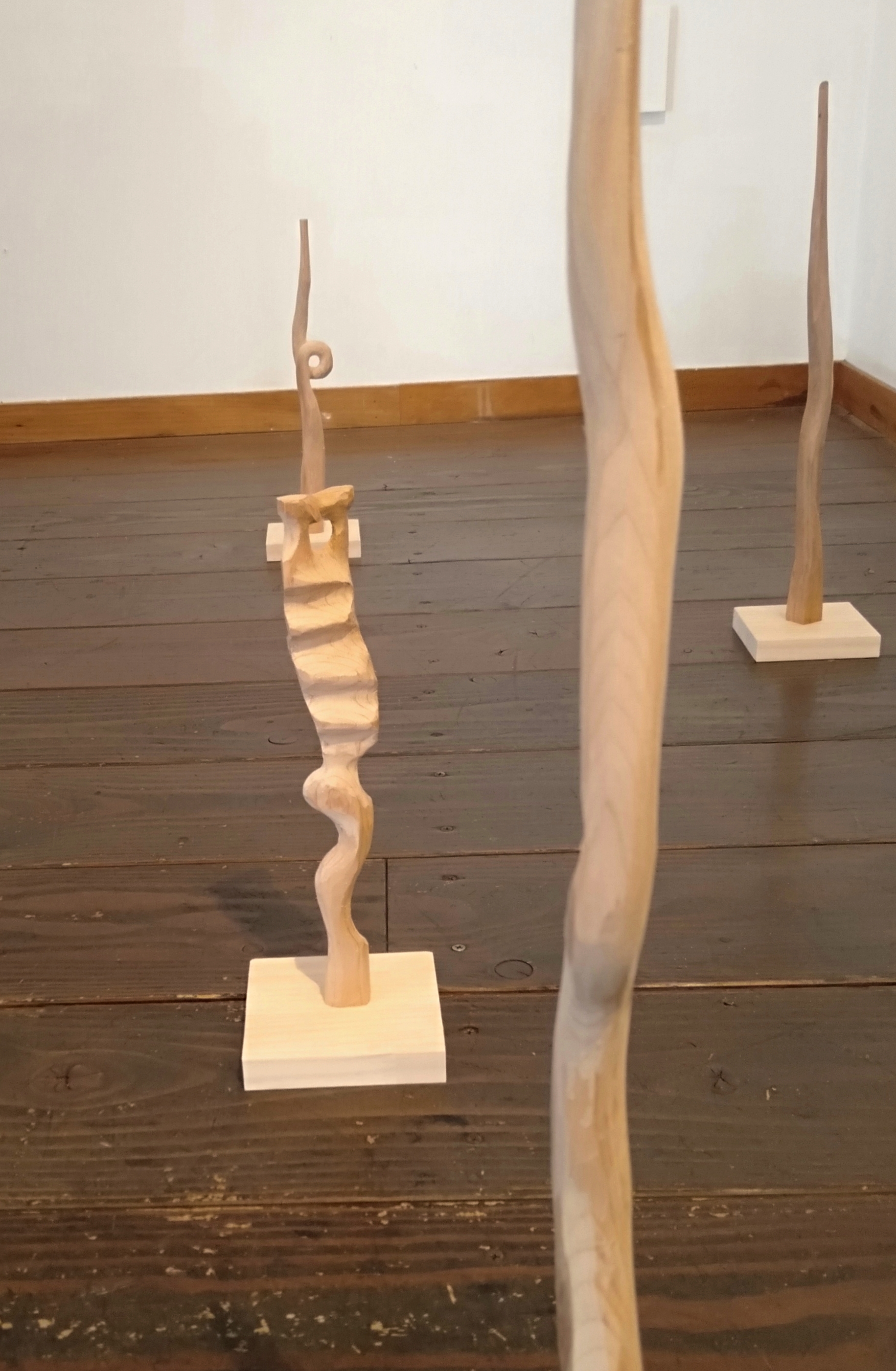2015年12月の記事
全3件 (3件中 1-3件目)
1
-

「東横特急」から「Fライナー」へ
18日、2016(平成28)年3月26日より、横浜高速鉄道みなとみらい線・東急東横線・東京メトロ副都心線・西武池袋線・東武東上線直通の最速達列車に「Fライナー」の愛称を付けて運行することが各社から発表された。今回登場する「Fライナー」の運行間隔は、現行の「東横特急」と同じ15分間隔で、西武池袋線方面への列車と東武東上線方面への列車がそれぞれ30分間隔で運行される。「Fライナー」の愛称は、速さを意味する「Fast」、相互直通運転の5社を示す「Five」、副都心線のローマ字表記「Fukutoshin」の頭文字「F」から名づけられた。現在東横線・みなとみらい線を特急(「東横特急」)、副都心線を急行、池袋線を快速急行、東上線を急行の種別で走る列車が「Fライナー」の統一された愛称で呼ばれることとなる。東上線を急行運転する東京メトロ直通列車は今回が初登場となる。以前にもこのブログで書き表した通り(2013(平成25)年6月9日「もしも東急東横線の「特急」を正式に「東横特急」に改称したら」)、僕も直通運転先で別々の種別を名乗る列車に対して、少々ややこしい感を抱き、例えば西武池袋線や東武東上線から副都心線・東横線直通列車に乗車する際に「この電車は東横線では『東横特急』に変わるのだろうか」と不安になる乗客も少なからずいるのではないかと疑問に思う乗客が少なくないと見ていたことから、阪神と山陽電鉄の「直通特急」のような統一された種別への改称を提案した。さらに言えば、2015(平成27)年時点のダイヤでは、東京メトロ副都心線・有楽町線から来た列車は東武東上線ではすべて「各停」に格下げされてしまい、さらにはふじみ野駅で後続の快速列車に抜かれるため、持ち前の速達性を損ねていたことも問題視していた。東横線・副都心線では、直通運転開始当初より、JR東日本湘南新宿ラインと横浜駅~渋谷駅・池袋駅間で競合しており、運賃では東横線・副都心線が優位に立っていたが、所要時間ではわずかに湘南新宿ラインが勝り、東横線・副都心線は横浜駅、渋谷駅、池袋駅のホームがいずれも地下深くにあるため、地上出口までの移動距離でも不利だった。しかしさらに視野を広げて、横浜駅~川越駅間で見てみると、JR東日本では湘南新宿ラインまたは東海道線・上野東京ラインと埼京線を乗り継ぐ必要があるが、「Fライナー」では乗り換えなしであることに加えて、所要時間でも東横線・副都心線・東上線経由が「Fライナー」で74分(推定 現行の東横特急・副都心線急行列車の横浜駅~和光市駅の所要時間と和光市駅での停車時間、東上線急行列車の和光市駅~川越駅の所要時間とを合算 和光市駅の停車時間は1分で計算)であるのに対して、JR東日本では湘南新宿ライン・埼京線経由が90分(横浜駅~大崎駅は湘南新宿ライン特別快速列車利用、大崎駅~川越駅は埼京線快速列車利用 大崎駅での乗り換え時間は5分で計算)、東海道線・上野東京ライン経由が87分(横浜駅~赤羽駅は東海道線・上野東京ライン各停列車利用、赤羽駅~川越駅は埼京線快速列車利用 赤羽駅での乗り換え時間は4分で計算)、運賃でも東横線・副都心線・東上線経由が860円(IC乗車券利用の場合は853円)、JR東日本湘南新宿ライン・埼京線経由および東海道線・上野東京ライン・埼京線経由が1,320円(IC乗車券利用の場合は1,317円 最短経路で運賃計算するためいずれの経路でも運賃は同額)となる。さらには川越駅の東上線ホームは、埼京線と同じ地上にあるため、横浜駅・渋谷駅・池袋駅とは違い、列車を降りてから出口までの移動距離も短い。横浜駅~川越駅間では「Fライナー」が、乗り換え回数、所要時間、運賃、川越駅での出口までの移動距離、いずれでも優勢となる。現行でも東横線・副都心線・東上線直通列車の横浜駅~川越駅の所要時間は83分だが、前述のとおり「Fライナー」では停車駅が少ないことと、ふじみ野駅での待避がなくなることから74分に短縮されることが見込まれるため、さらに優勢となる。僕として気になる点は、東上線でも急行列車となる「Fライナー」が、現行ダイヤで東横線・副都心線からの列車が和光市駅で接続する東上線池袋駅発の急行列車と和光市駅以西のダイヤを交換する形で、森林公園駅まで運行するようになるのかどうかということである。路線図の上では、「森林公園駅まで直通運転」となっているが、森林公園駅まで直通する列車は朝と夜にしか運行されず、しかも東武車による入出庫列車に限られ、東京メトロ車、東急車、横高車による運用がないため、これも実態に合っていないと考えていた。2013(平成25)年3月のダイヤ改正まで、同じ東京メトロの日比谷線では、東武伊勢崎線(東武スカイツリーライン)への直通区間は北千住駅~東武動物公園駅間であったが一部に南栗橋駅発着の列車が運行されていた。しかし南栗橋駅まで運行される列車は、こちらも東武車による入出庫列車のみであり、運行本数も少なかったため、東京メトロの路線図では、日比谷線は「東武動物公園駅まで直通運転」とし、南栗橋駅までは日常的に運行されていないこと、東京メトロ車が南栗橋駅まで乗り入れないことが判りやすかった。「Fライナー」が日常的に森林公園駅まで運行され、名実共に「森林公園駅まで直通運転」となることも、合わせて願いたい。On 18th, Tokyu Corporation, Tokyo Metro, Tobu Railway, Seibu Railway, and Yokohama Minatomirai Railway announced that they would renamed the fastest trains between Motomachi-chukagai Station on Yokohama Minatomirai Railway Line and Kotesashi Station or Hanno Station on Seibu Ikebukuro Line or Kawagoeshi Station or Shinrin-koen Station on Tobu Tojo Line via Tokyu Toyoko Line and Tokyo Metro Fukutoshin Line, which operates as limited express on Yokohama Minatomirai Railway and Toyoko Line, express as Fukutoshin Line and Tojo Line, and as rapid express on Ikebukuro Line, "F Liner", after the initial of "Fast", "Five", and "Fukutoshin Line" on March 26th, 2016. It is also first time that the express train train going through Fukutoshin, Toyoko, and Yokohama Minatomirai Railway Line appears on Tojo Line. "F Liner" runs every 15 minutes, the same as limited express trains on Toyoko Line in the present, and the trains going toward Ikebukuro Line and the other toward Tojo Line does on an every-30-minute basis. As I wrote on June 9th, 2013, I have felt that the trains running over two or more lines and changing its kind at the border of the lines sometimes gives us a sense of incongruity and that makes some passengers confused about whether it changes limited express on Toyoko Line like that of express train on Tobu Isesaki and Nikko Line train changing to local on Tokyu Den-en-toshi Line. To resolve this problem, I suggest that the new unified name of the fastest train on those Lines like "going-through limited express" on Hanshin Electric Railway and Sanyo Electric Railway. In addition, I see that all of the trains going through Tojo Line changes to local and are passed following rapid train at Fujimino Station makes those trains slow down as a problem.Toyoko Line and Fukutoshin Line competes JR Shonan-shinjuku Line between Yokohama Station and Ikebukuro Station since the going-through service started. Though the fare of Toyoko Line and Fukutoshin Line is inexpensive, Shonan-shinjuku Line train is little faster than those and the platform for Toyoko Line and Fukutoshin Line at Yokohama, Shibuya, and Ikebukuro are located at deep under the ground, which makes passengers walk little long distance from the entrance of the station. However, seeing a larger area, "F Liner" can serve the travel between Yokohama Station and Kawagoe Station with no transfer, more inexpensive fare, and faster. It takes 74 minutes (estimated from the present timetable of limited express on Toyoko Line, express on Fukutoshin Line, and express on Tojo Line and one-minute stopping time) and 860 yen (IC card fare 853 yen). On the other hand, the travel by JR Lines needs a transfer at Osaki, in case of via Shonan-shinjuku Line, or AKabane, in case of via Tokaido and Ueno-tokyo Line, to Saikyo Line, it takes about 1 hour and an half and costs 1,320 yen (IC card fare 1,317 yen) in both routes. Furthermore, different from Yokohama, Shibuya, and Ikebukuro, Tojo Line platform at Kawagoe Station is located on the ground, the same level as JR East's, which makes people's walking from the train to the station exit shorter."F Liner" can shorten its travel time than the present to decrease the stopping stations and stop waiting for the following train passing.One more what I wonder is "F Liner" operation is being extended to Shinrin-koen Station using the way to exchange the timetable of the train from Toyoko and Fukutoshin Line and the express train from Ikebukuro on Tojo Line connecting to the former at Wakoshi. Though the railroad map says Fukutoshin Line trains go through Tojo Line to Shinrin-koen Station, the train for Shinrin-koen from Fukutoshin Line operates in the morning and evening only and all of them does by Tobu carriages, which doesn't match the reality.In case of Hibiya Line before March 16th, 2013, some Hibiya Line trains went through Tobu SKYTREE Line to Tobu-dobutsu-koen(Tobu Zoo and Amusement Park) Station, but some trains by Tobu carriage operated from Minami-kurihashi. The map of Tokyo Metro said Hibiya Line train did to Tobu-dobutsu-koen, which made passengers easy to understand the trains by Tokyo Metro carriage didn't go through and the daytime operations didn't to Minami-kurihashi.I also wish "F Liner" regularly operates from/to Shinrin-koen Station to solve the problem on map. 東急電鉄 プレスリリース 2015年12月18日「東武東上線・西武池袋線 ~ 横浜高速みなとみらい線間を運転する速達性の高い直通列車の愛称名を『Fライナー』といたします。」
Dec 27, 2015
コメント(0)
-

東急田園都市線 6ドア車置き換えは2016年1月から
東急電鉄では、田園都市線ホームドア設置・6ドア車置き換え計画の次なる段階として、去る12月8日より、5000系6ドア車組み込み編成で運行されてきた朝ラッシュ時の列車を、順次全車4ドア車編成への変更して運行し、さらに5000系の一部編成に連結されている6ドア車を置き換える4ドア車の新造を始めた。東急電鉄では、2020(平成32)年までに田園都市線・東横線・大井町線のすべての駅へのホームドアの設置を進めているが、田園都市線では4ドア車と6ドア車とが混在していることから、4ドア車で揃えられた東横線・大井町線と比べてホームドアの設置が遅れている。2015(平成27)年10月に宮前平駅に田園都市線の駅として初めてホームドアが設置された。ただし6ドア車が現役のままの状態で4ドア車の基準でホームドアが設置されたことから、6ドア車の側扉とホームドアとのずれを解消するため、列車とホームドアの間に移動空間を確保し、6ドア車でも乗降可能にした。今回新たに投入される4ドア車両は、6ドア車と同様の、モーターのない付随車(サハ)となり、これまでの5000系4ドア車を基本としつつも、より快適な車内空間を目指し、4000系4110F「Shibuya Hikarie号」で採用されたハイバック仕様の座席、5000系では初採用となる17インチの液晶画面(「TOQビジョン」)、2段手すり付きのフリースペースなどの改良点が見られる。これらの4ドアサハ車の内装のイメージイラストを見てみると、座席袖仕切りから出ている手すりが通路上部まで回り込み、ドア部枕木方向のものと一体化していないことから、「sustina」ではないとも見える。12月22日から23日にかけて、実車が神奈川県・横浜にある金沢文庫の総合車両製作所横浜事業所から長津田へと回送された。回送されたのは5117F用と5120F用の合計6両。同車を組み込んで生まれ変わる5117Fと5120Fは2016(平成28)年1月22日より営業運転を開始する予定となっている。2017(平成29)年度中までに置き換えを完了させる予定でいる。2015(平成27)年5月発表の事業計画でも、6ドア車置き換えについて触れられていたが、この度実車がお目見えし、いよいよ東急田園都市線から、5000系から6ドア車が姿を消そうとし、同時にこの先、東急電鉄各駅へのホームドアの設置がより本格的に進められようとしている。From December 8th, Tokyu Corporation started to change the carriages for Den-en-toshi Line trains on the weekday morning from the sets including 6-doored ones to all 4-doored. The 4-doored carriages to replace the 6-doored ones started to be built.Tokyu Corporation plans to install the automatic platform gates in all stations on Toyoko, Oimachi, and Den-en-toshi Lines by 2020. However, especially on Den-en-toshi Line, both 4-doored and 6-doored carriages are in service, it had been said it was hard to install because of the gap of the interval of the gates and 6-doored carriage. On October, 2015, the gates are installed in Miyamaedaira Station, which was first time to be installed them in Den-en-toshi Line station, but the gates and the carriage are separated to make the room for persons' moving from the 6-doored carriages.The newly-built 4-doored carriages are the trailers and their interior has some improvements, such as seatings with high backrest, 17-inch LCDs(TOQ Vision), space for luggage or baby buggy/pushchair with two different height grab handles. As seeing the image of the interior, the grab handle from the end plate of the seatings don't unify the transverse one laid out over the aisle, so they aren't built by "sustina" method.From December 22nd to 23rd, the first 6 carriages for 5117F set and 5120F set are shipped from J-TREC factory in Yokohama, Kanagawa Prefecture, to Nagatsuta train shed. The two sets coupled with the newly-built ones are starting from January 22nd, 2016. The more 39 carriages continues to manufacture by 2017.According to a press release on May, 2015, the plan for replacement of 6-doored carriages was treated. The appearance of the carriages leads the retirement of the 6-doored ones and the installment of the gates in more stations.東急電鉄 プレスリリース 2015年12月7日「田園都市線6ドア車を、順次4ドア車に置き換えて運転します」交友社「鉄道ファン」鉄道ニュース 2015年12月24日 「東急5000系6扉車置換え用の4扉車が甲種輸送される」
Dec 26, 2015
コメント(0)
-
銀座駅での熱い一時
2日、東京メトロ銀座駅の「銀座オアシス」で開催された「Metro Music Oasis vol.60 ~向谷 実Special Live~」を聞きに行った。17:00と18:30の2回公演があり、僕は18:30の回に参加した。狭い銀座駅のコンコース定刻通りに向谷さんとバンドメンバーがステージに現れた。まずは、東京メトロ東西線の発車メロディを繋ぎ合わせた「A Day in the Metro」(A線 落合駅→西船橋駅)と「Beyond the Metropolis」(B線 西船橋駅→中野駅)の2曲を演奏。「Beyond the Metropolis」の後は向谷さんの即興演奏に入り、そのまま九州新幹線のテーマ曲の1つ「さくら」へ。4曲目は1曲目・2曲目と同じ東西線の発メロから、日本橋駅の「お江戸日本橋」のジャズアレンジバージョン。5曲目は東急東横線渋谷駅の発車メロディ「Departing from New Shibuya Terminal」のフルコーラスバージョン。6曲目の「大きな玉ねぎの下で」では、原曲を歌う爆風スランプのボーカリストで、向谷さんとも親交があるサンプラザ中野くんが登場。なんとリハーサルなしのぶっつけ本番だという。これで終わりの予定であったが、アンコールで、これまた爆風スランプの代表曲「Runner」を披露した。これまでにも何度か向谷さんのコンサートを聴きに行ったことがあったが、今回初めて、「A Day in the Metro」と「Beyond the Metropolis」、そして僕が一番好きな「Departing from New Shibuya Terminal」を生演奏で聴くことができ、また東西線九段下駅の発車メロディに「大きな玉ねぎの下で」が採用された経緯の裏話なども聞けて、今回のステージはかなり楽しめた。On 2nd, I went to see a music performance by Minoru Mukaiya and his special band at "Ginza Oasis", the event space at the concourse of Ginza Station. They had two shows a day, 17:00 and 18:30, and I saw the latter.At first, they played "A day in the Metro" and "Beyond the Metropolis", both of which were the arranged version of departure sign melody joined all stations on Tokyo Metro Tozai Line.After finishing the second music, Minoru continued to play improvising impromptu and went into the next music "Sakura", a theme song of Kyushu Shinkansen.The fourth was "Oedo Nihonbashi", a Minyo traditional Japanese falk song and used as the departure sign at Nihonbashi Station on Tokyo Metro Tozai Line.The fifth was "Departing from New Shibuya Terminal", the full-size version of departure sign at Shibuya Station on Tokyu Toyoko Line.After the music, Sunplaza Nakano-kun, the vocalist of a Japanese band "BAKUFU-SLUMP" and who was a friend of Minoru's, surprisingly appeared and sang "Okina Tamanegi no Shita de (Under the Nippon Budokan's Giboshi symbol)" with the band performance. According to the programme, the performance finish had come, but they played an encore, which was "Runner", the most famous music of BAKUFU-SLUMP's and Sunplaza Nakano-kun also sang.Before that day, I had seen Minoru's performance several times, but this time made me most exited because I could listen to "A day in the Metro", "Beyond the Metropolis" and "Departing from New Shibuya Terminal", and heard the episode how "Okina Tamanegi no Shita de (Under the Nippon Budokan's Giboshi symbol)" was introduced as the departing sign at Kudanshita Station.
Dec 2, 2015
コメント(0)
全3件 (3件中 1-3件目)
1
-
-

- アニメ・特撮・ゲーム
- 白い砂のアクアトープ 3話視聴
- (2024-11-11 22:30:40)
-
-
-

- 美術館・展覧会・ギャラリー
- 市川悦也さんの個展へ
- (2024-11-15 06:48:18)
-
-
-

- どんな写真を撮ってるの??(*^-^*)
- 2024秋 滋賀旅行 #07
- (2024-11-15 20:19:56)
-






